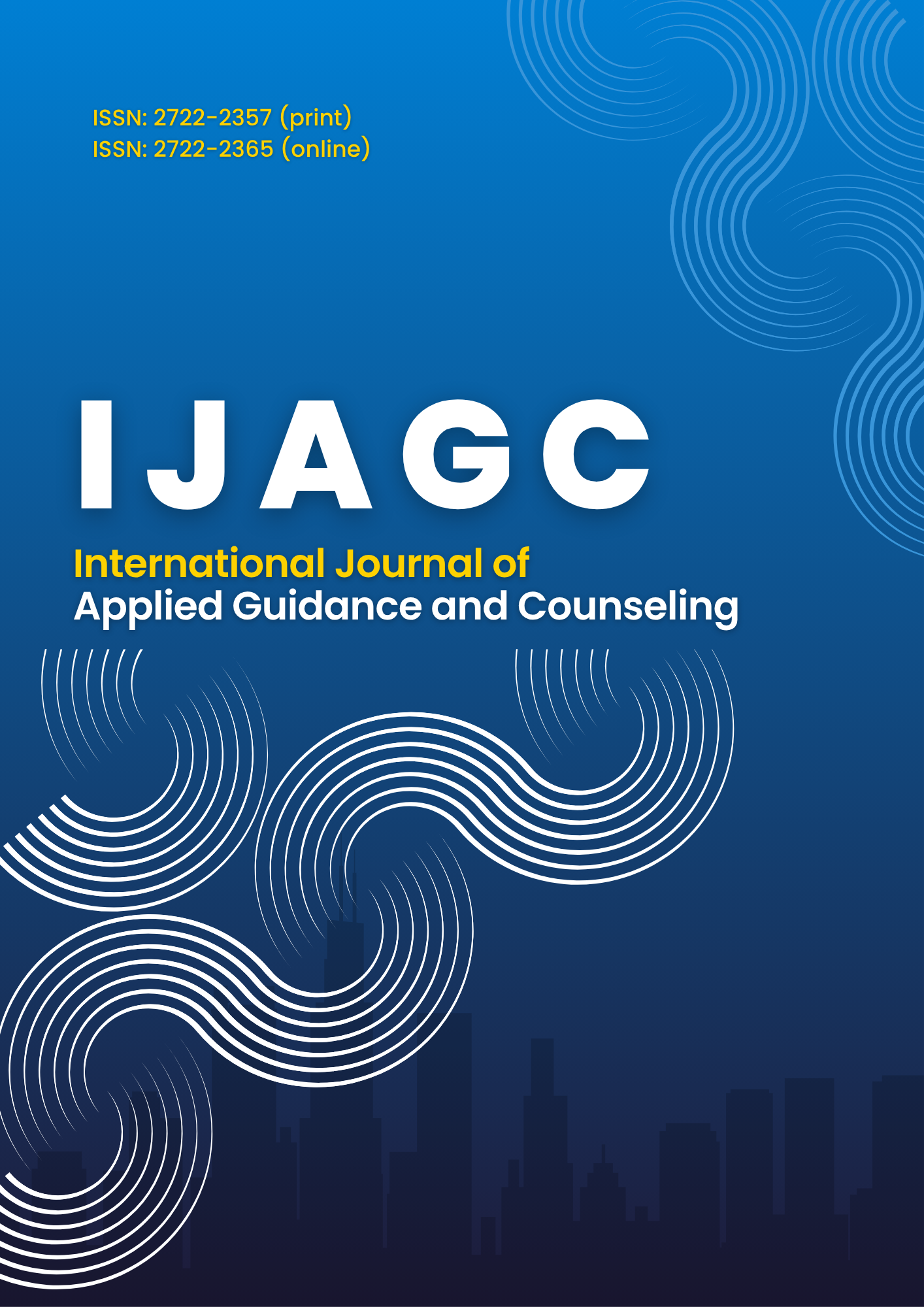Development of Mobile Learning as a Student Career Planning Media at Senior High School 1 Talang Ubi
DOI:
https://doi.org/10.26486/ijagc.v2i2.1867Keywords:
career planning, mobile learningAbstract
Background of this research is the lack of students' understanding of career planning, there are several career problems faced by students. This study aims to produce a mobile learning-based career planning application at Senior High School 1 Talang Ubi. This development research refers to the steps of research and development (R&D) by Borg and Gall. Subjects in the initial field trial 6 students scored 79.46 in the very good category, the main field trial 12 students scored 84.07 in the very good category, and the operational field trial 32 students scored 94.47 in the very good category. good. Subject selection was based on the purposive sampling technique. The results showed that (1) the media produced was in the form of a career planning application using Adobe AIR for Android Version 0.1, (2) the mobile learning produced according to experts was suitable for use as a medium for student career planning at Senior High School 1 Talang Ubi.
References
Arsyad, A. (2015). Media Pembelajaran. Jakarta: PT Raja GrafindoPersada.
Astuti, B., Veronica, N., Purwanta, E., Novita, D., &Risqiyian, L. H. (2020, February). Individual Student Planning Model to Develop Career Readiness in High School. In International Conference on Educational Research and Innovation (ICERI 2019) (pp. 61-64). Atlantis Press.
Bardick, A. D. Bernes, K. B., Magnusson, K. C., & Witko, K. D. (2006). Junior high school student’s plans for the future. Journal of Career Development, 32, 250-271.R. Nicole, “Title of paper with only first word capitalized,†J. Name Stand. Abbrev., in press.
Gati I., Levin N., Landman-Tal S. (2019) Decision-Making Models and Career Guidance. In: Athanasou J., Perera H. (eds) International Handbook of Career Guidance. Springer, Cham. https://doi.org/10.1007/978-3-030-25153-6_6.
Heinich, R., Molenda, M., Russel, J. D., & Smaldino, S. (1999). Intructional media and technologies for learning. UperSadle River: Prentice Hall.
I Gusti, U., Sumartana, I., Waruwu, D., &Krismawintari, N. P. D. (2020). Implementation of Social Education Models Early Prevention Indicators COVID-19 Spread. Journal of Enginering and Management, ISSN: 0193-4120 Page No. 14971 - 14979 (July 7, 2020).
Korucu, A. T., & Alkan, A. (2011). Differences between mobile learning (mobile learning) and e-learning, basic terminology and usage of mobile learning in education. Procedia-Social and Behavioral Sciences, 15, 1925-1930.
Munir, M. (2017). Pengembangan Media Mobile Learning (Mobile learning) PengenalanJurusanPerguruan Tinggi Pada Siswa Kelas XI Sman 1 Jatirogo-tuban. Jurnal BK UNESA, 7(3).
Sanjaya, W. (2014). Media KomunikasiPembelajaran. Jakarta: KencanaPrenada Media Group.
Saputro, B., &Suwarjo. (2020). Pengembangan Permainan Simulasi Berbasis Aplikasi Untuk Meningkatkan Kematangan Karier Peserta Didik SMA.Tesis, tidak diterbitkan, Universitas Negeri Yogyakarta.
Sitompul, L. (2018). MeningkatkanPemahamanPerencanaan Karir MelaluiLayananBimbingan Karir di SekolahdenganMenggunakan Media Gambar Pada Siswa Kelas IX-1 SMP Negeri 1 GebangTahun 2017-2018. TABULARASA, 15(3), 316-327.
Syaodih N. (2009). Metode Penelitian Pendidikan. PT. RemajaRosdakarya Offset. Bandung.
Tas’adi, R., &Sisrazeni, S. (2017). Pengembangan Modul LayananInformasi Karier di SMK untukPersiapan Memasuki Dunia Kerja. PROCEEDING IAIN Batusangkar, 1(1), 176-189.
Veronica, N., Purwanta, E., & Astuti, A.B. (2020). Design And Development Of A Mobile Learning For Career Planning In Senior High School. International Journal of Scientific & Technology Research, 9, 908-913.
Winkel &Hastuti, S. (2013). Bimbingandan Konseling di Institusi Pendidikan. Yogyakarta: Media Abadi.
Yusuf Syamsu. (2006). PsikologiPerkembangan Anak dan Remaja. Bandung: Rosda Karya.
Downloads
Published
Issue
Section
License
Authors who publish with IJAGC: International Journal of Applied Guidance and Counseling agree to the following terms:
Authors retain copyright and grant the Insight right of first publication with the work simultaneously licensed under a Creative Commons Attribution License (CC BY-SA 4.0) that allows others to share (copy and redistribute the material in any medium or format) and adapt (remix, transform, and build upon the material) the work for any purpose, even commercially with an acknowledgement of the work's authorship and initial publication in Insight. Authors are able to enter into separate, additional contractual arrangements for the non-exclusive distribution of the journal's published version of the work (e.g., post it to an institutional repository or publish it in a book), with an acknowledgement of its initial publication in Insight.
Authors are permitted and encouraged to post their work online (e.g., in institutional repositories or on their website) prior to and during the submission process, as it can lead to productive exchanges, as well as earlier and greater citation of published work (See The Effect of Open Access).












